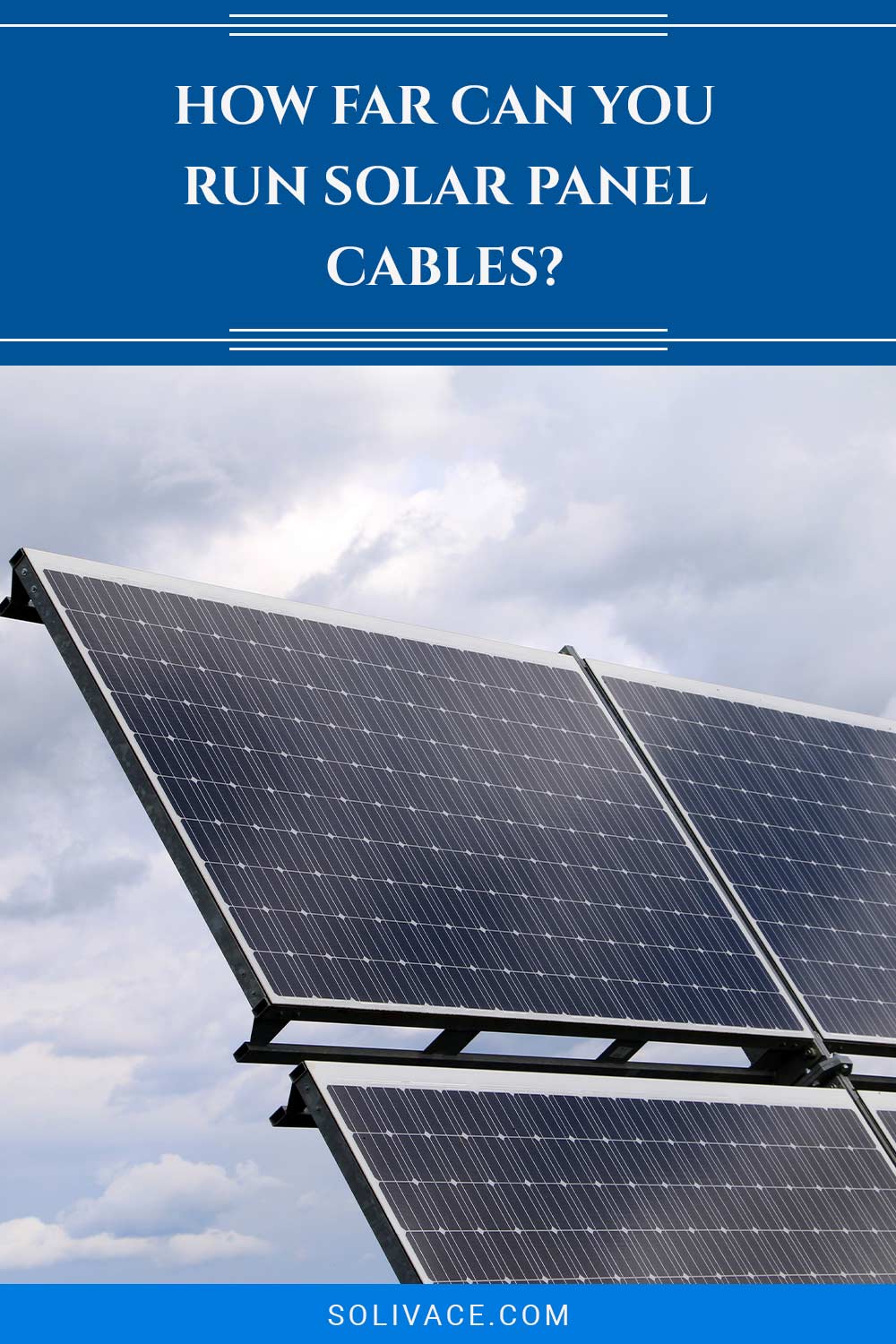How Far Can You Run Solar Panel Cables?
We may earn commissions for purchases made through links on our site. Learn more on our about us page.
This will depend on the gauge size of the cable; solar panel cables #10 AWG (American Wire Gauge) will be limited to fifty feet in length. If there is a need for longer cable lengths, options will be available at the #8 and #6 AWG sizes.
As for rooftop specifications, the installer will be wise to keep the cables short and tucked out of the way when possible, and some experts will tell you to keep the cable lengths up here to between twenty and thirty feet.
This article will discuss certain aspects of this piece of the Solar Panel power collection puzzle.

Is there a Maximum Length?
As mentioned earlier in the article, specific gauge-sized cables will only come in certain sizes and lengths.
For example, the maximum length of the ten gauge cable will be fifty feet for the best results, but other cables will be made to deliver quality performance for lengths longer than that.
Regarding the safety of the system and the people working with the solar panel equipment (owner included), there will be guidelines on the lengths of cables for the roof, walls, and any ground-laid wiring rigs.
Do Solar Panel Cables Need to be the Same Length?
This answer will be no, but there will be ease and comfort for the installation crew if the lengths of the cables remain uniform. In addition, this will mean that sections of cable that run along the solar panel system will coordinate and be easy to maintain.
The main takeaway about cable lengths for solar power systems will be remembering that length is only sometimes a good thing.
The power and energy loss caused by cabling longer than fifty feet will be noticeable, which is why many electricians with solar panel expertise recommend that cable length be kept in the range of twenty to thirty feet.
Is there an Ideal Distance?
There have been many references to the power loss suffered from excess cable lengths, to which many of the cables should be kept below thirty feet in length.
The ideal distance will be the shortest wiring for the electric current to travel from the panel to the controller and onto the inverter or storage batteries.
For larger solar installations, remember to keep the cabling to a maximum of fifty feet; solar farms over an acre in size will need longer lengths to compensate for the immense area being covered by the system.
What Should You Know Beforehand?
Before switching to a solar setup, the first step will be to research the systems that will fit your household or building dimensions. Below is a list of the elements to know before starting the journey to electricity generation:
- Understand and know the utility company costs and rates.
- Learn the energy usage patterns of the home.
- Find warranties provided by the installation service, plus check credentials and certifications.
- Discover the optimal placement for the panels to absorb the most sunlight.
- Develop a relationship with a local installer and speak with them about solar panel systems to understand what the homeowner is trying to accomplish.
Common Mistakes You Need to Avoid:
This is going to be a relatively simple mistake that can be easily avoided by taking the time to get the right information and people involved, that mistake being rushing into getting a solar system without any context or pre-knowledge.
Of course, many will have made this mistake and suffered because of it, but having conversations with an installer can yield new understanding. An expert can help you avoid making mistakes altogether.
This leads to the second mistake, not communicating with the installer’s needs and wants from the solar panel project. Again, defining these requirements will help avoid arguments or conflicts on design, equipment, or other elements.
Final Thoughts on How far can you Run Solar Panel Cables
To wrap this up, take a moment and consider the purpose of these panels and the generation of your power.
Most will want these systems to help the planet shift to a renewable energy power grid and save money on electric bills, even eliminating them together.
The world is transitioning into a renewable energy-based powered society, but the change needs to be faster.
In the next hundred or so years, technologies for collecting the sun’s power will improve and have spacecraft-powering capabilities. Meh, a sci-fi fan can dream, can’t they?



Leave a Reply
You must be logged in to post a comment.